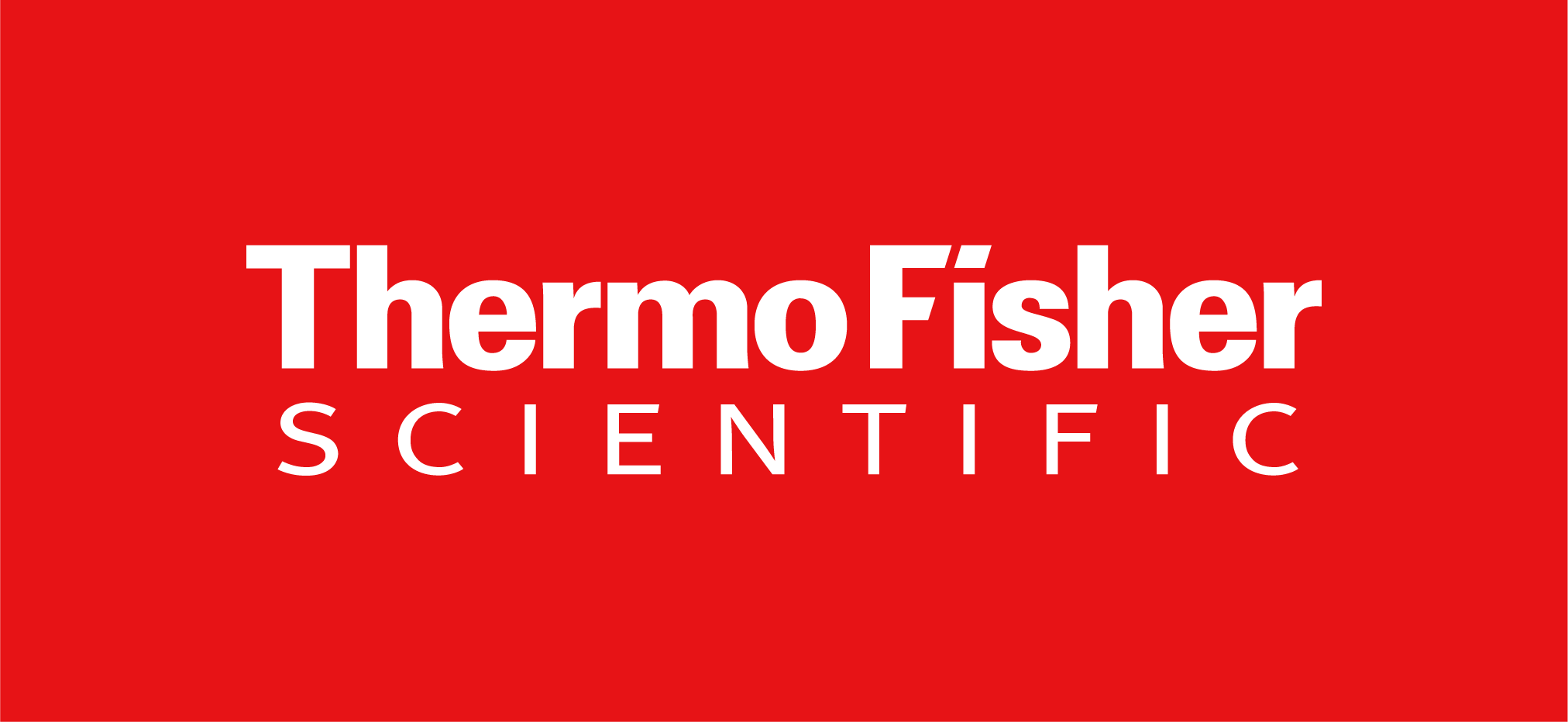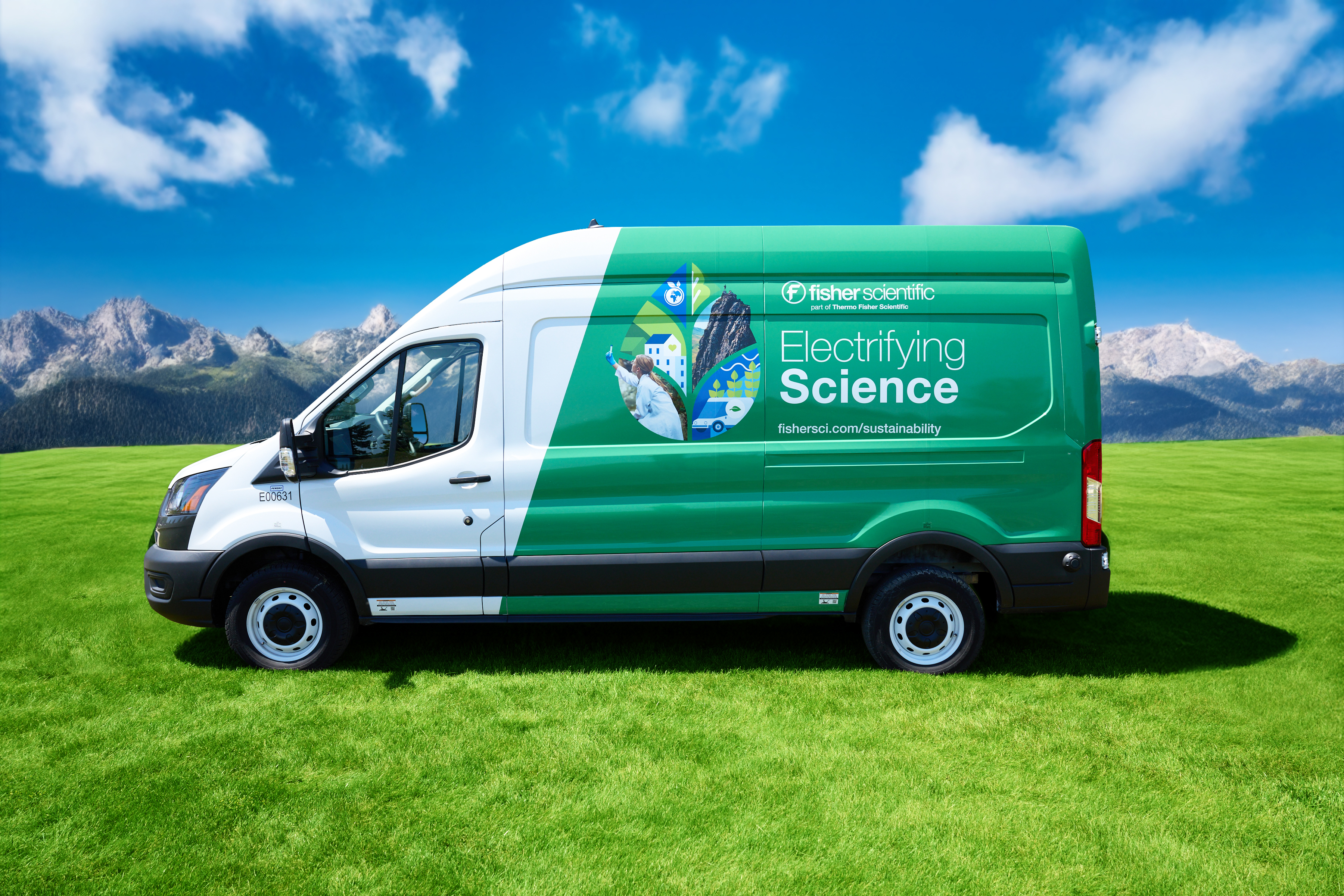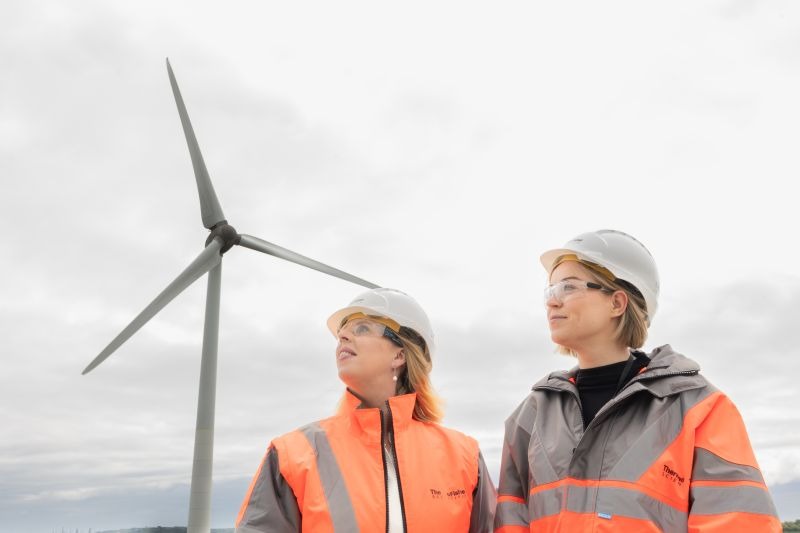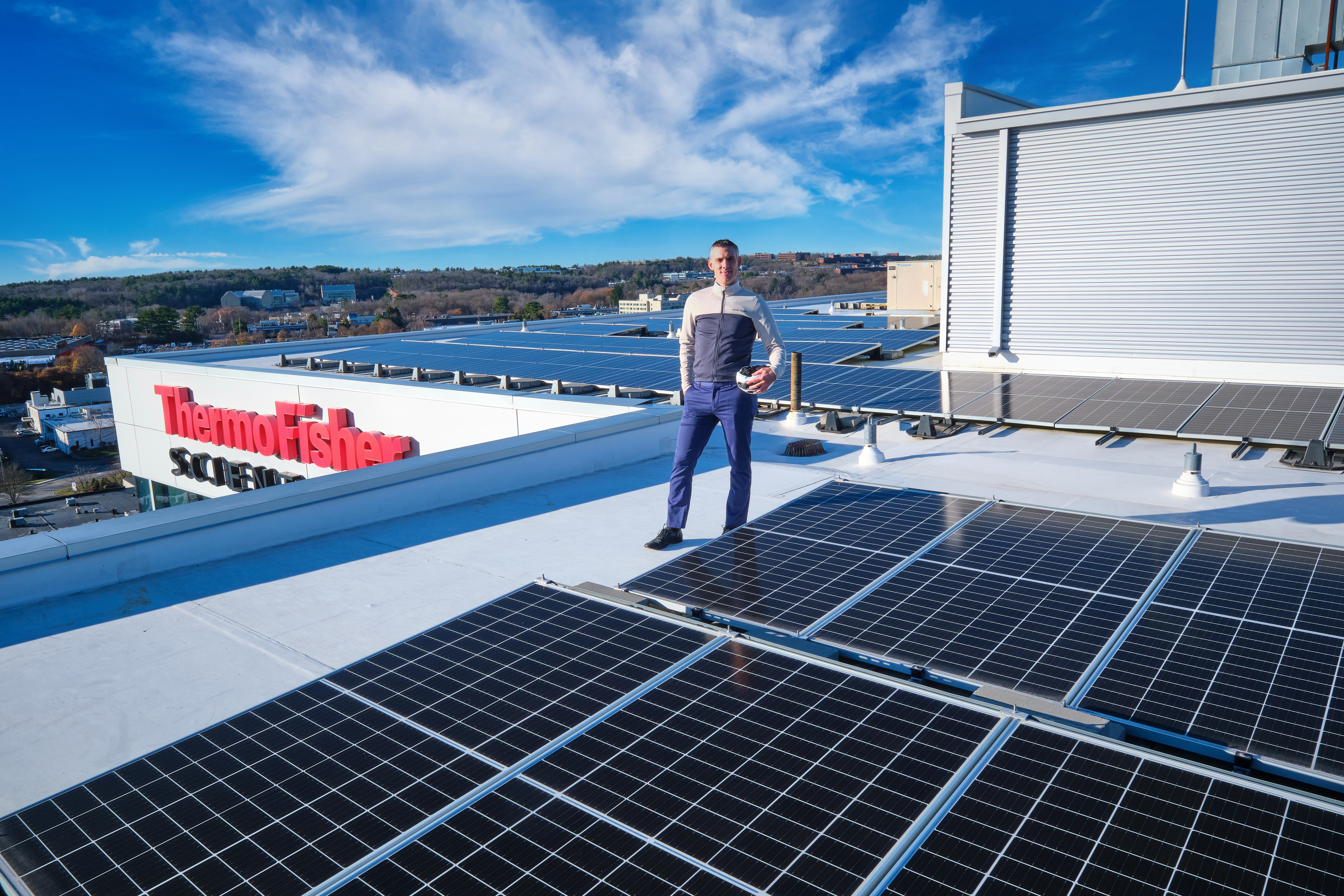Climate
We support the urgent calls from scientists across the globe for climate action. Our net-zero strategy is centered around:
- Transitioning away from fossil fuels and high-impact refrigerants
- Accelerating the adoption of renewable electricity
- Engaging with our suppliers to amplify collective progress
Climate targets
Our climate strategy includes greenhouse gas (GHG) emissions reduction targets that align with the Paris Agreement, 1.5°C pathway and the Sustainable Markets Initiative (SMI) Health Systems Task Force joint supplier standards. Our climate targets guide our progress and assessments by relevant, third-party organizations further validate our approach. In 2022, Thermo Fisher was one of the first companies in our sector to have a net-zero target validated by the Science Based Targets initiative™ (SBTi).¹ In 2023, we augmented our climate plan by setting another near-term target—to achieve 80% renewable electricity globally by 2030.
To report on our progress, our company has participated in CDP² for more than 10 years. In 2024, we maintained our A- CDP Climate score for our leadership among the 22,000+ companies globally that are CDP reporters.³
CDP climate score of A-
Climate Targets
Data governance
In 2024, we continued to invest in systems to strengthen our environmental sustainability measurement and performance. This included implementing a leading cloud-based system to improve the granularity of our spend-based emissions factors for purchased goods and services as well as integrating supplier-specific emission factors where available.
For a detailed description of our greenhouse gas accounting methodology, see our CDP Climate disclosure.
Scope 1 and 2

At the end of 2024, Thermo Fisher was ahead of schedule to achieve our 2030 target. Our Scope 1 and Scope 2 emissions were more than 29%7 lower than our 2018 baseline, and seven sites were fossil-fuel free.8 Year over year, we have reduced Scope 1 and 2 emissions 5% by increasing our procurement of renewable electricity and execution of our carbon capital plan.
See the Data summary for climate and energy data.
- 7,700 MTCO2e to be reduced annually from 36 carbon capital plan projects completed in 2024
- Introduced electric vehicle delivery vans into the Fisher Scientific™ commercial fleet
Operational net-zero governance
Recognizing the vital role our sites and colleagues play in advancing our progress, we enhanced our net-zero capital guidance in 2024 to provide further detail on the transition away from high-impact refrigerants. Aligning the global organization on a shared path toward achieving our climate goals, our net-zero capital guidance includes:
- A Net-Zero Building Design Guide, outlining mandatory measures such as eliminating the use of fossil fuels and high-impact refrigerants for all new building construction and major renovation projects
- Incorporation of GHG impacts into our capital request process, requiring an exception for any project that adds or extends fossil fuel consumption
- Establishment of our Carbon Capital Plan to execute the transition away from fossil fuel and high-impact refrigerant assets across the company

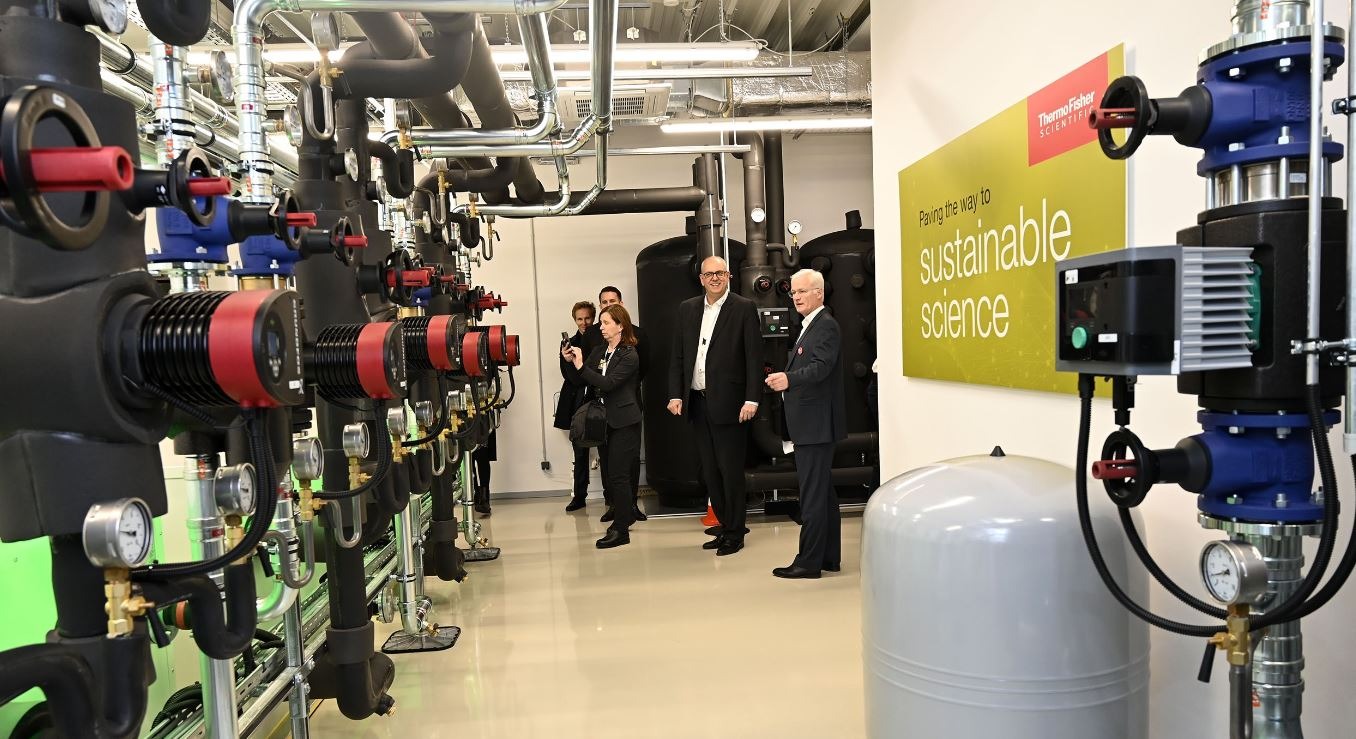
Transitioning to green technologies
Under our carbon capital plan, we are increasing the use of electrification solutions across our facilities to help reduce our reliance on fossil fuels. For example, instead of replacing natural-gas-fired HVAC units with the same technology at end-of-life, our net-zero capital guidance pointed to an alternative approach — heat pumps.
This versatile solution can provide both green heating and cooling by transferring heat rather than generating it. Heat pumps deliver three to four times more energy than they consume, reducing operational costs and providing green heat when combined with renewable electricity.
In 2024 we installed heat pumps across seven sites10 resulting in the elimination of over 2,000 metric tons of carbon dioxide equivalent (tCO2e) of emissions annually.
Renewable electricity
Thermo Fisher is ahead of schedule to achieve its 2030 target of 80% renewable electricity globally. In 2024, 47% of our electricity was sourced from renewables. Additionally, we are on track to achieve 100% renewable electricity in the United States, Canada, and addressable regions in Europe by 2026.
80 sites globally powered with 100% renewable electricity
Site strategies
- 17,716 MWh (megawatt-hours) of renewable power generated by on-site solar and wind installations
- 13 MW (megawatts) total installed on-site solar power, including 4.0 MW installed in 2024 at seven facilities11
- 100% renewable electricity at select facilities in Brazil, China, and Mexico from the purchase of unbundled International Renewable Energy Certificates12
Virtual power purchase agreements (VPPA) *

300,000 MWh¹³
renewable wind power online from our share of Seven Cowboy project

200 MW
Millers Branch Solar project in Texas via 20-year VPPA

91 MW
portion of Serbal Solar project in Spain via 15-year VPPA

73 MW
portion of Lorca Solar project in Spain via 10-year VPPA
Colleague training
Launched in 2023, we continued to offer training to support our teams in advancing our environmental sustainability priorities. An interactive, foundational learning module on our environmental strategy and net-zero roadmap is supplemented by a series of short, podcast-style videos that provide an easily accessible, microlearning experience available to all colleagues.
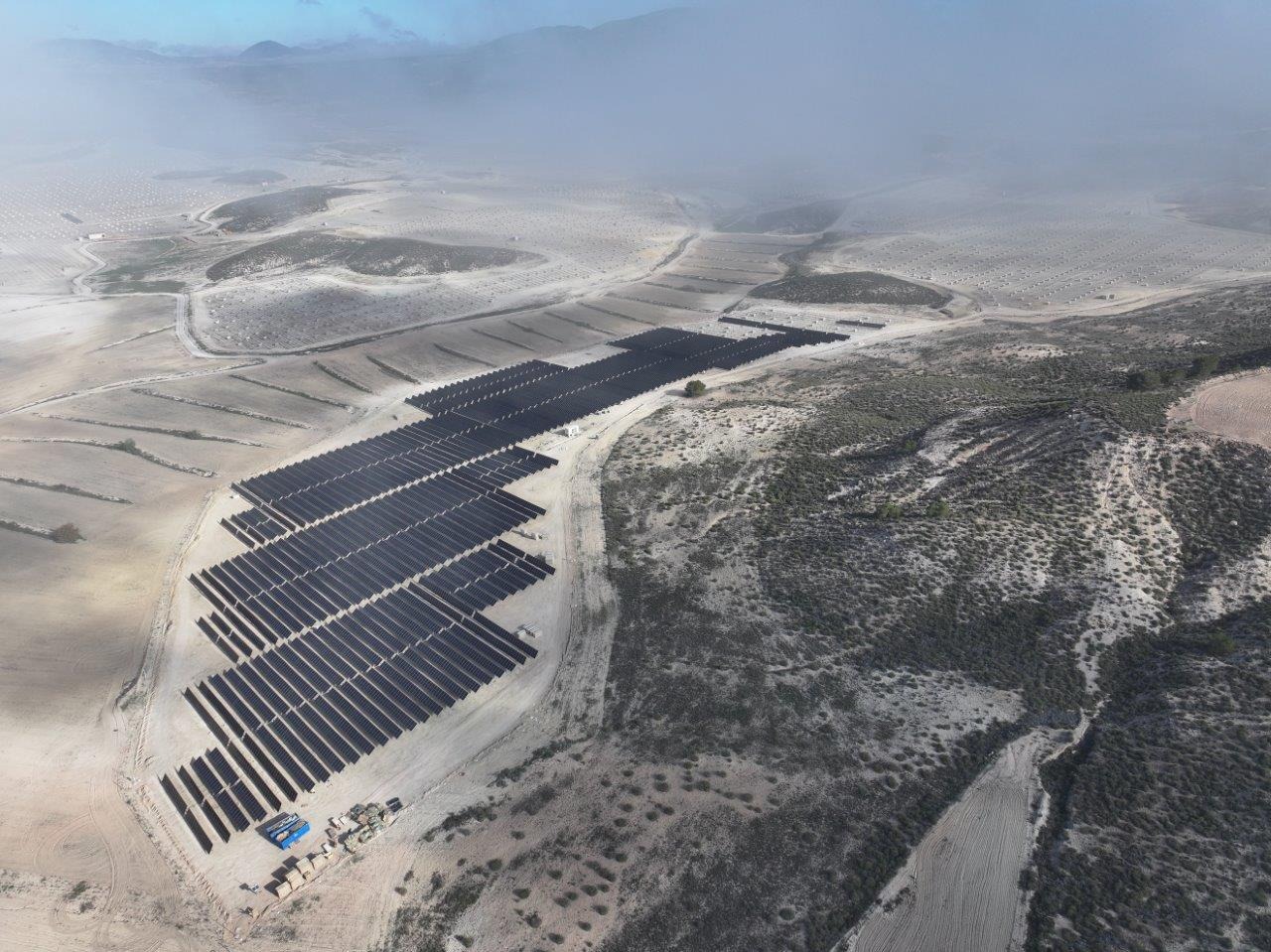
Value chain collaboration for renewable electricity
“Serving as cohort lead for this agreement empowered us to leverage learnings and insights from our own climate journey to help advance our collective progress toward net-zero emissions, while achieving 100 percent renewable electricity for our European sites.”
— Konrad Bauer, Senior Vice President, Global Business Services, Thermo Fisher Scientific
To advance our net-zero by 2050 roadmap, electrification efforts most go beyond our own operations. Recognizing the substantial impact of Scope 3 emissions for most companies, including our customers, Thermo Fisher has spearheaded two efforts to support decarbonization across the value chain, the first of which was the aggregated 127MW Serbal Solar VPPA, a collaboration with Eurofins Scientific, in 2023.
In 2024, we led a cohort of value chain partners Gilead Sciences, GSK, and Haleon in the aggregated 118 MW Lorca Solar VPPA through the pharmaceutical and healthcare industries’ Energize initiative. The project reflects a decarbonization best practice and will simultaneously reduce the respective Scope 2 and Scope 3 emissions of all parties.
Scope 3
For Thermo Fisher, over 90% of our value chain emissions are generated outside of our operations. To address this, we continue to focus on achieving our target to have 90% of our suppliers by spend set science-based targets14 by 2027. At the end of 2024, 28% of our suppliers by spend had accomplished this, and an additional 17% committed to set a science-based target.
Nearly 500 suppliers participated in the Summit
Through our Scope 3 program, we enhanced supplier engagement, training and capability building in 2024, including hosting our Supplier Summit event to reinforce our environmental sustainability ambitions and expectations with suppliers. Hosted virtually, the summit enabled us to share tools, such as our Supplier Guide to Decarbonization, as well as best practices to help suppliers start or accelerate their journey to net-zero. For the first time, we recognized two participants with our Supplier Sustainability Award for their sustainability efforts and contributions to our goals.
Overall, our Scope 3 emissions fell by 12% from the prior year and 30% compared to our 2021 baseline. This change is primarily attributed to reductions in purchased goods and services spend, freight volumes transported and electricity consuming equipment units sold.
Transitioning to Primary Data
Thermo Fisher recognizes the need for improvements in data accuracy for calculating Scope 3 emissions. Over the last few years, we have transitioned several Scope 3 emission categories to primary data including energy, transportation, waste, business travel and use of sold goods. In 2024 we implemented a leading cloud-based system to begin this transition for emissions associated with purchased goods and services and capital goods (categories 1 and 2, respectively). Approximately 21% of our 2024 emissions from these two categories were derived from supplier-specific emission factors.
The 2024 transition to primary data resulted in a significant restatement in related emissions. During this exercise, we identified spend-based emission factors can substantially over or underestimate emissions compared to using primary data.
In 2025, we plan to further our supplier engagement program to increase the use of primary data for purchased goods and services and capital goods. As primary data share increases, we anticipate additional adjustments to emission data and, consistent with the GHG Protocol, will apply these adjustments back to our base year of 2021.
2024 highlights
Purchased Goods
- 247 tCO2e reduced by a purchasing switch decision from our Bremen, Germany site to argon and nitrogen gases created using 100% renewable electricity.
Transportation
- 9,300 tCO2e prevented by shifting more than 770 tons of shipment volume from air to ocean transport.
- 7,957 tCO2e in well-to-wake emissions prevented by investing in sustainable aviation fuel for transportation of select goods.15
Waste
- 263 tons of waste reduced by expanding our equipment refurbishment, component salvage and resale program.
Business travel
- 252 tCO2e in well-to-wake emissions prevented by participating in the Eco-Skies Alliance for sustainable aviation fuel, which releases up to 80% fewer emissions compared to traditional jet fuel.15
Commuting
- 608 electric vehicle charging stations provided to colleagues at over 55 sites. Several sites also offer subsidies for biking, public transit and shuttles.
- Our targets were validated by the Science Based Targets initiative (SBTi) in April 2023.
- CDP is a nonprofit organization that runs a global disclosure system for investors, companies, cities, states and regions to assess their environmental impacts.
- CDP Scoring: Companies are assessed and scored on a grading scale of A-/A (Leadership), B-/B (Management), C-/C (Awareness), D-/D (Disclosure) and F (Failure to disclose). The levels represent a company's progression towards environmental stewardship.
- Exact target is 50.4% from a 2018 baseline. Our 2018 Scope 1 and 2 market baseline is equivalent to 788,647 MTCO2e.
- Requires at least 90% reduction against the base year (2018 for Scope 1 and 2, 2021 for Scope 3) with long-term removal of any residual emissions generated after the target date.
- Percentages may not add up due to rounding. Our Scope 1 and 2 emissions are represented by direct energy and refrigerants and indirect energy. Our Scope 3 emissions cover purchased goods and services, capital goods, transportation and distribution, fuel- and energy-related activities, waste, commuting, business travel, use of products sold, and end-of-life treatment.
- This figure may not match the one found in the Highlights section or the Data summary due to rounding.
- Fossil-fuel free is defined by Thermo Fisher as greater than 99% of the energy consumed came from renewable sources.
- Progress reflected includes restated environmental data for the 2018 to 2023 reporting year(s) to resulting from the following:
- acquisition of CorEvitas, LLC and Olink Holding AB,
- operational data collection improvements,
- inclusion of supplier-specific emission factors in Scope 3 Categories 1 and 2,
- shift in environmentally extended input-output emission factor source from U.K. to CEDA and inflation adjustment factors for Scope 3 Categories 1 and 2,
- adjustments to energy attribute certificates allocation within the relevant electricity grid region, and
- emission factor updates. - The seven sites where heat pumps were installed are Vilnius, Lithuania; Cork, Ireland; Whitby, Canada; Rochester, New York; Frederick, Maryland; Logan, Utah; and Linz, Austria.
- The seven facilities where on-site solar was installed are Allschwil, Switzerland; Karlsruhe and Rheinfelden, Germany; Linz, Austria; Seneffe, Belgium; Singapore; and Warrington, United Kingdom.
- The International Renewable Energy Certificate (I-RECs) is an exchangeable Energy Attribute Certificate (EAC) that conveys information about the production of a unit of electricity such as where the electricity was produced, the capacity of the Production Facility, and the energy source. I‑RECs can be used for Scope 2 reporting, national energy reporting, and general end-user claims, and allows all electricity users to make a conscious and evidence-based choice for electricity, in any country where service providers have been accredited by the International Tracking Standard Foundation.
- Exact number is 296,967 megawatt-hours (MWh).
- By spend - for the two indicators presented in this table, suppliers with science-based climate targets track progress toward our 2027 Scope 3 emissions target, while suppliers committed to set a science-based climate target represent the pipeline of suppliers that may support future progress.
- The reduction calculation is based on the well-to-wake life cycle. Well-to-wake means the direct and indirect GHG emissions occurring from the combustion of aviation fuel, as well as upstream GHG emissions related to extraction, refining, production, and transportation.
*Learn more about our VPPA initiatives:
- 200 MW Millers Branch Solar project in Texas via 20-year VPPA
- 91 MW portion of Serbal Solar project in Spain via 15-year VPPA
- 73 MW portion of Lorca Solar project in Spain via 10-year VPPA
